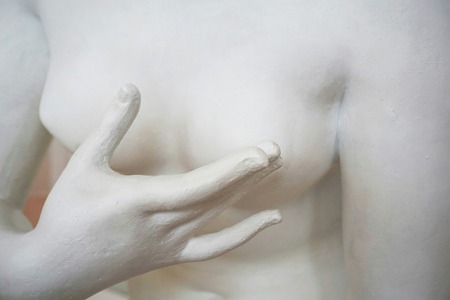Mastitis Matters: Recognizing And Managing Breast Inflammation
- By: Rupesh
- On:

Breastfeeding can create an incredible bond between a mother and her child. a mother and her baby. However, some difficulties can be associated with it, as is often the case. One challenge that frequently arises is mastitis. Mastitis is a painful condition in which the breast tissue becomes inflamed, leading to discomfort, swelling, and even fever. Recognizing the early signs of mastitis is crucial for prompt intervention and effective management.
This article will explore the causes of mastitis, its symptoms, and treatment options. We will discuss the importance of early detection and highlight practical strategies for preventing mastitis from occurring.
Whether you are an expectant mother or an experienced breastfeeding veteran, this comprehensive guide will provide the knowledge and tools you need to recognize and manage mastitis effectively. From home remedies to medical interventions, we will empower you to navigate the challenges of mastitis with confidence.
Join us as we illuminate the subject of mastitis and help you better understand this common yet often misunderstood condition.
Understanding Mastitis: Causes And Symptoms
Mastitis is primarily caused by bacteria entering the breast tissue through cracked or sore nipples. The bacteria multiply rapidly, leading to an infection and subsequent inflammation. Poor breastfeeding technique, inadequate breast milk removal, or blocked milk ducts can also contribute to the development of mastitis.
Mastitis symptoms can vary from mild to severe. Initially, you may experience breast tenderness, warmth, and swelling. As the infection progresses, you may develop Symptoms resembling those of the flu, including fever, chills, and body aches. Some women may also notice redness or a localized hard lump in the affected breast.
It is important to note that mastitis can occur at any stage of breastfeeding, although it is more common in the early weeks when both the mother and baby are still adjusting to the process. Recognizing the signs of mastitis early on is crucial for prompt intervention and effective management.
The Importance Of Early Detection And Diagnosis
Early detection and diagnosis of mastitis are vital for successful treatment and preventing complications. If you suspect you may have mastitis, it is essential to seek medical advice promptly. Your medical practitioner will perform a comprehensive assessment and evaluation and may request a milk sample for culture to identify the bacteria causing the infection.
In some cases, a breast ultrasound Other potential causes of the condition may also need to be ruled out, and therefore, breast inflammation might be recommended. The sooner mastitis is diagnosed, the sooner treatment can begin, reducing the risk of the infection spreading and leading to more severe complications.
Common Misconceptions About Mastitis
There are several common misconceptions about mastitis management and treatment. One such misconception is the belief that mastitis only occurs in women who are not breastfeeding. In reality, mastitis can affect breastfeeding women of all ages and can happen even if you have successfully breastfed previous children without any issues.
Another misconception is that mastitis is always accompanied by visible redness or a breast lump. While these symptoms can be present, they are not always present, and mastitis can still be diagnosed based on other symptoms such as breast pain, tenderness, and flu-like symptoms. It is important to dispel these misconceptions and educate women about the true nature of mastitis management.
Treating Mastitis: Home Remedies And Self-Care Tips
In mild cases of mastitis, self-care and home remedies can help alleviate symptoms and promote healing. Here are some tips to consider:
- Continuing to breastfeed: Contrary to popular belief, it is usually safe to continue breastfeeding when you have mastitis. Emptying the breast through frequent nursing or pumping can help relieve engorgement and promote milk flow, reducing the risk of further infection.
- Warm compresses: A warm compress to the affected breast before nursing or pumping can help soothe pain, promote milk flow, and reduce inflammation. Soak a clean cloth in warm water, wring out the excess, and apply it to the breast for 10-15 minutes before feeding.
- Practicing good hygiene: Proper hygiene is crucial when managing mastitis. Wash your hands thoroughly before breastfeeding or expressing milk, and keep your nipples clean and dry between feedings. Avoid using harsh soaps or lotions on your breasts, as they can contribute to dryness and cracking.
Remember, these self-care tips complement medical treatment and should not replace professional advice. If your symptoms worsen or do not improve within 2-8 hours, it is essential to seek medical help.
When To Seek Medical Help For Mastitis
While self-care and home remedies can be effective in mild cases of mastitis, knowing when to seek medical help is essential. You should contact your healthcare provider if:
- If your symptoms worsen or do not improve, it is essential to seek medical attention. If they persist or worsen despite home remedies and self-care, this may indicate a more severe infection that requires medical intervention.
- You develop a high fever: A high fever (over 101°F or 38.3°C) is a sign that the infection may spread and become systemic. Seek immediate medical help if you experience a high fever.
- You notice pus or blood in your breast milk: If you notice any changes in the appearance of your breast milk, such as pus or blood, it is essential to seek medical attention. These changes may indicate a more severe infection and require medical treatment.
Remember, early detection and prompt medical intervention can prevent complications and ensure a faster recovery.
Antibiotics For Mastitis: Benefits And Considerations
In many cases, antibiotics are prescribed to treat mastitis. Antibiotics are effective in eliminating the bacteria causing the infection and reducing inflammation. The type and duration of antibiotic treatment will depend on the severity of the disease and the specific bacteria involved.
Before completing the treatment, it is essential to take the entire course of antibiotics as prescribed, even if your symptoms improve. This will help eradicate all the bacteria and reduce the risk of recurrent infection.
It is also worth noting that most antibiotics are safe while breastfeeding. However, it is essential to inform your healthcare provider that you are breastfeeding so they can prescribe a suitable antibiotic that will not harm your baby.
Preventing Mastitis: Breastfeeding Techniques And Lifestyle Choices
Prevention is always better than cure when it comes to mastitis. Here are some practical strategies to help reduce your risk of developing mastitis:
- Maintain good breastfeeding technique: Ensuring a good latch and proper positioning can help prevent nipple damage and promote effective milk removal. If you are experiencing difficulties with breastfeeding techniques, seek the guidance of a lactation consultant.
- Avoid engorgement: Engorgement occurs when the breasts become overly full and can contribute to blocked ducts and mastitis. The nurse frequently ensures that both breasts are adequately emptied during each feeding session. If you cannot nurse, pump or hand express milk to relieve engorgement.
- Take care of your nipples: Cracked or sore nipples can provide an entry point for bacteria, increasing the risk of mastitis. Use lanolin cream or breast milk to moisturize and protect your nipples after each feeding. If you are experiencing persistent nipple pain, consult a lactation consultant or healthcare provider for assistance.
- Practice good self-care: Self-care is essential for maintaining overall health and preventing mastitis. Get plenty of rest, eat a balanced diet, stay hydrated, and manage stress levels. Gentle exercise, such as walking or yoga, can also help promote healthy milk flow.
Support And Resources For Managing Mastitis
Managing mastitis can be challenging, both physically and emotionally. It is essential to seek support from healthcare providers, lactation consultants, and other breastfeeding mothers who have experienced mastitis. They can provide guidance, reassurance, and practical tips for managing the condition.
Online resources, such as breastfeeding support groups and forums, can also be invaluable sources of information and support. Remember, you are not alone in your journey, and resources are available to help you navigate the challenges of mastitis.
Mastitis And Breastfeeding: Maintaining Milk Supply
One concern many breastfeeding mothers have when faced with mastitis is the impact it may have on their milk supply. It is usual for milk production to decrease temporarily during an episode of mastitis due to inflammation and engorgement. However, the milk supply can typically return to normal with proper treatment and support once the infection subsides.
Continuing to breastfeed frequently, even during a bout of mastitis, is critical to maintaining milk supply. The more you empty your breasts, the more signals your body receives to produce milk. If you cannot nurse directly, pumping or hand-expressing milk can help maintain milk supply and alleviate engorgement.
It is also important to stay hydrated and nourished, as adequate fluid and nutrient intake are essential for milk production. If you have concerns about your milk supply, consult a lactation consultant or healthcare provider for personalized guidance and support.
Conclusion: Taking Control Of Mastitis For A Healthier Breastfeeding Experience
Mastitis management can be challenging and painful. However, with early detection, prompt treatment, and appropriate self-care, you can effectively manage mastitis and continue to enjoy a positive breastfeeding experience. Understanding the causes and symptoms of mastitis, dispelling common misconceptions, and implementing preventive measures can reduce your risk of developing mastitis and promote a healthier breastfeeding journey.
Remember, seeking support from healthcare professionals, lactation consultants, and other breastfeeding mothers is crucial for navigating the challenges of mastitis. With the proper knowledge, resources, and support, you can take control of mastitis and ensure a successful breastfeeding experience for both you and your baby.
Together, we can empower women to recognize, manage, and overcome mastitis, promoting healthier breastfeeding experiences for mothers and babies worldwide.


